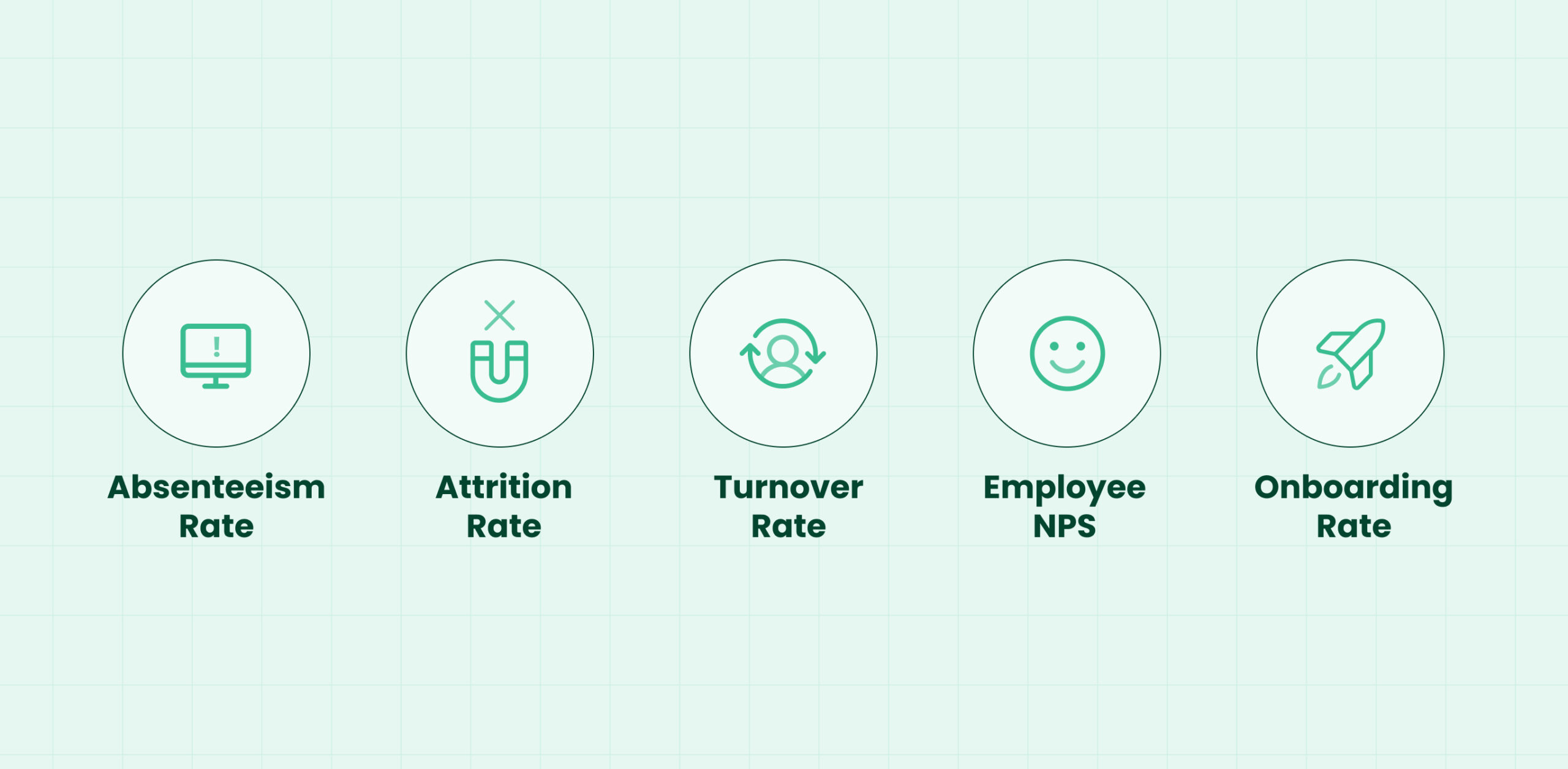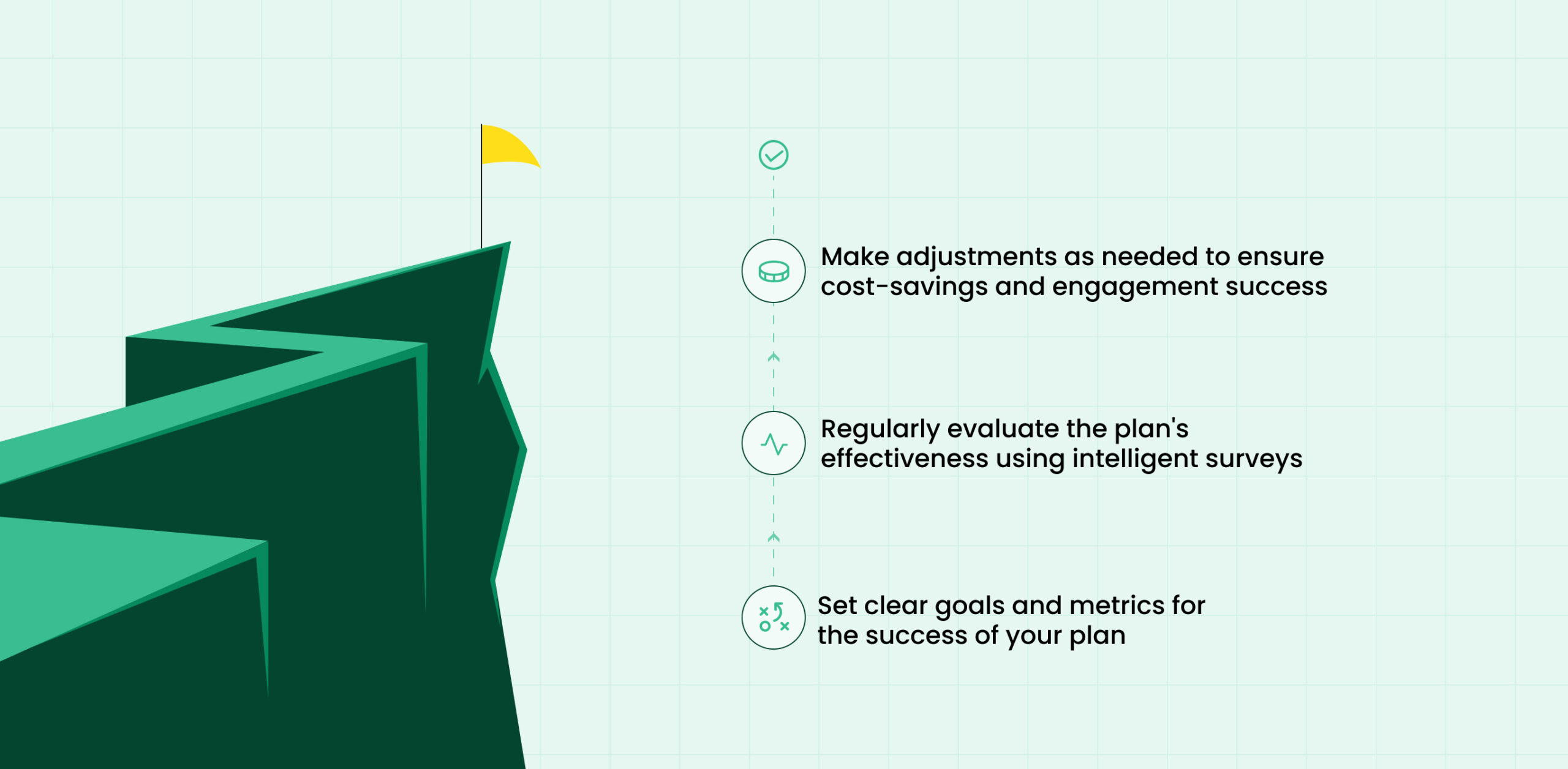Introduction
The year 2023 began with the arrival of the Recession. Many organizations’ profitability and financial stability were clearly impacted by the economic turmoil. The external crisis’ domino effect was felt very strongly by the internal core of the organizations, reaching the employee morales.
Moreover, during a recession, uncertainty, and insecurity about your position in the organization rise to the surface. As a result, levels of engagement decrease. When these confusions are compounded by a lack of communication and clarity from the organization, the situation devolves into complete chaos.

Thus, engaging and motivating your employees becomes even more difficult while also necessary. Because only highly engaged employees can help organizations weather a volatile economy. Employees who are personally invested in their jobs do not allow outside events to interfere with their efficiency and productivity.
Many times, the organization and its stakeholders recognize the importance of employee engagement. However, budget constraints and cost-cutting measures imposed by economic downturns can cause employee engagement to suffer. As a result, finding a mid-way is important in order to keep the morale high and the expenses in check.
In this blog, we will go over in detail how to create a cost-effective employee engagement plan when your organization is in the midst of an economic downturn. Also discussed is how investing in the right technology can help you save money on employee engagement initiatives not only now but in the future.
Assessing your current employee engagement strategy

To pitch a new cost-effective employee engagement strategy, you must first assess the ROI of your current engagement initiatives and identify which engagement initiatives are producing visible results. You have been missing a critical step in your overall engagement strategy if you have not measured the effectiveness of your engagement initiatives up to this point. To answer, how to assess the ROI of your current employee engagement strategy, here are some tangible metrics to help you derive the quantifiable impact:
 Absenteeism rate:
Absenteeism rate:
How motivated your employees are to show up at work every day is a clear indicator of their engagement levels. The absenteeism rate can be easily calculated on a monthly basis in which you divide the number of unexcused absences in a given time period of time, dividing it by the total time period, and multiplying the sum by 100 to calculate the percentage.
 Attrition rate:
Attrition rate:
How frequently your employees are leaving the company within their period of joining is also a critical indicator of your organization’s engagement levels. This calculation must include employees who left for better opportunities, unplanned retirements, resignations for personal reasons, and lay-offs.
The formula for calculating your employee attrition rate is by dividing the number of full-time employees who have left per month by the average number of employees and then multiplying that sum by 100.
 Turnover rate:
Turnover rate:
Employee turnover is defined as the number of employees who quit the organization, or, are asked to leave, and are replaced by new employees. Another notably quantifiable KPI is calculating the turnover rate of your employees. The calculation is very simple, divide the number of exited employees which includes all the resignations in a year by the total sum of active employees by the year-end, and multiply by 100. The remaining number will be your annual turnover percentage.
 Employee NPS:
Employee NPS:
This KPI indicates how likely an employee will refer your organization’s services and products to his friends and family. This metric notably indicates how much the employee is engaged in and believes in what the organization does. The employee NPS is calculated using the following formula: eNPS = percentage of Promoters minus percentage of Detractors. The result can range from -100 to +100.
 Onboarding rate:
Onboarding rate:
You have a few KPIs to measure the success of your recruitment initiative. Overall, when a new employee decides to stay after the “early hire” time period, this indicates that your organization is headed in the right direction in terms of identifying and engaging new employees.
Further, you can also measure the onboarding rate through the percentage of employees coming through internal referrals, this point indicates that your existing employees are happy with their work environment and wish to share it with their peers.
Developing a cost-saving employee engagement plan:
During an economic downturn, all businesses, regardless of size are under constant pressure to cut costs as well as increase employee engagement. The company’s HR professionals face a difficult role in such situations because they directly represent the company and are responsible for cost-cutting while also increasing employee engagement.
If the term “cost-cutting” begins to appear in HR discussions, it can cause mental stress among employees. In these circumstances, HR professionals will face difficulties in increasing employee engagement. But, employee engagement does not have to cost a fortune every single time. All you need is a structured and streamlined approach in order to build a plan that does not burn a hole in your annual budget. Here are a few easy steps that can help you build a cost-saving employee engagement plan based on feedback data and accurate analytics.
 Prioritizing employee needs and concerns:
Prioritizing employee needs and concerns:
The ultimate goal of your employee engagement plan is to increase employee motivation and morale. As a result, developing an engagement strategy centered on employees’ needs and concerns within the organization is critical. Utilize pulse surveys or quarterly surveys to better understand what your employees require to feel more engaged in their jobs and what is currently not working for their engagement in the workplace.
 Identifying low-cost or no-cost employee engagement options:
Identifying low-cost or no-cost employee engagement options:
For a long time, employee engagement was only practiced by large corporations. This gave rise to the notion that employee engagement is a financial investment. Employee engagement, on the other hand, is critical for businesses of all sizes. Furthermore, employee engagement does not always imply a “new type of expense” in your budget. Even if your budget is limited, there are numerous ways to boost employee engagement and happiness.
There are many types of employee engagement activities that will not even cost you a dime but can bring in a visible impact.
- No-cost ideas: Internal email shout-outs, feedback surveys, providing flexible working hours, offering unlimited paid leaves, encouraging each team to lunch together daily, hosting one-on-one interactions to understand employee concerns, asking for employees’ feedback on new changes/organizational projects, mentor programs for new joiners, discourage micromanagement.
- Low-cost ideas: Encourage employee well-being by providing competitive health care plans offer incentive schemes to motivate employees, build a re-skilling program by offering e-learning platforms, introduce a referral program for existing employees, host team lunches to promote communication, provide training to managers with people skills, host family days or pet days in the office.
 Leveraging technology to reduce costs:
Leveraging technology to reduce costs:
Leveraging the proper technology may make a significant impact in overall employee engagement and productivity—and making your employees feel more appreciated as valuable members of the team. Using the correct technologies and platforms can significantly improve your employee experience. You may save excessive paperwork by keeping your solutions virtual with the correct tools and solutions. You can also make it easier for every employee to easily access essential data and information as and when needed.
Measuring the success and adjusting the plan

Because there is no one-size-fits-all strategy for measuring employee engagement, you should use a variety of employee engagement tools, metrics, and methods to gain an accurate picture of your employee engagement levels. And re-work the plan according to the results.
Here’s how you can do it:
Set clear goals and metrics for the success of your plan:
Before measuring the success of your plan, it is important to know what exactly you wish to achieve with your engagement plan. Therefore, setting a clear goal is crucial. The second step is identifying quantifiable metrics that can help you show visible impact. Some of the quantifiable metrics are absenteeism rate, employee turnover, retention rates, eNPS, and most important, employee feedback surveys.
Regularly evaluate the plan’s effectiveness using intelligent surveys:
After you have collected enough data post measuring key metrics. Analyze how engaged are your staff right now. Is there any troubling input that necessitates immediate action? Are there any teams or departments that appear to be at risk of attrition? Keep in mind that unless numerous employees agree, excessively low scores in a single area should not be your main focus. Encourage managers to address business hours with employees individually if there are only a few reports of dissatisfaction with work hours.
Make adjustments as needed to ensure cost-savings and engagement success:
After you’ve examined the data, use popular employee engagement measures like your eNPS to establish benchmarks for your firm. It is critical to identify these data points in order to evaluate your development. After you’ve identified areas for improvement in your organization, revisit — or design — your employee engagement strategy. Return to your initial action plan to confirm that all of the relevant teams and backstops are in place. Make any required changes to the projected budget and timetable, and clearly define the roles of the people involved.
Investing in the right technology to ensure effortless & cost-saving employee engagement:
Many firms have learned in the previous two years the importance of investing in the proper technology and its long-term advantages. Whether it is employee engagement, communication streamlining, or the automation of tedious chores, new-age technology has several cost-saving options with long-term benefits.
AI-powered virtual assistants are one example of one-stop-shop technology that can assist HR professionals in automating dull and monotonous duties.
According to a study by G&A Partners, HR spends 73% of its time on administrative activities.
AI-powered virtual assistants provides a single forum for employees to express their problems and suggestions. One piece of software for tracking and measuring employee happiness. Chatbot with machine learning and natural language processing. A low-cost step in creating a memorable employee experience.
There’s little doubt that employees are dealing with more stress, burnout, and overwork than ever before — and while AI isn’t a panacea for all well-being issues, it can help workers focus more on what actually matters.
Here’s how an intelligent chatbot can save costs:
 Automates Onboarding:
Automates Onboarding:
A smooth and efficient onboarding process sets the foundation of a positive employee experience. A virtual assistant creates an organized experience that walks your new hires through every step of your onboarding program – without any manual effort. It necessitates a one-time setup for procedures such as new recruit training, reminders, linking them with colleagues, and more. This not only saves time for your HR department, but it also improves the initial impression prospective employees have of your company. With such increasing perks, many recruits see automation as a more customized, genuine choice for getting assistance with their problems.
 Efficient Recruitment:
Efficient Recruitment:
One of the most cost-effective ways to optimize your recruitment process is to hire a virtual assistant. A Virtual Assistant can sift through all of the CVs for you and select the best prospects for interviews based on your list of critical talents and attributes. It can also assist with some of the practical aspects of the recruitment process, such as posting job adverts and scheduling interviews. A trained Virtual Assistant may perform all of this administrative work on your behalf, leaving you free to conduct the interview. A Virtual Assistant can handle databases, so whenever you need to fill a position, they will be able to compile a list of qualified candidates.
 Increases employer brand value:
Increases employer brand value:
A positive and efficient employee experience can significantly increase the value of your brand. Providing each employee with a qualified and personalized assistant who has all the information they need at the push of a button and at no additional cost, can undoubtedly improve the employee experience. Intelligent technology like chatbots via an interactive and conversational interface is now making possible a self-service and employee-driven environment.
 Analytics-based employee engagement:
Analytics-based employee engagement:
Conducting employee engagement with the help of a virtual assistant can help you know your employees better. When employees are given the ability to act through a digital self-service environment, it allows them to express themselves more openly. AI-powered engagement tools have the ability to communicate with every employee and work toward the creation of a community. An all-around employee engagement bot works on peer appraisal, loyalty programs, and getting employees to interact through a discussion.
 Automates FAQs and Training needs:
Automates FAQs and Training needs:
A chatbot that is available 24 hours a day, seven days a week allows employees to be trained in an agile way and around the clock, bringing flexibility to their work life. Consuming these conversational training modules (FAQs, mini-questionnaires, and exams). For example, IT Helpdesk BOT gives access to information for employees across the firm to address issues and update knowledge in the IT space. Training bots also handle administrative tasks like issuing reminders and scheduling coach appointments. In a recent survey from resolved, 71% of full-time employees said they were willing to use a conversational virtual assistant to accomplish HR tasks.
Conclusion
We live in a time of unprecedented changes and never before in the history of HR have we had access to such a diverse set of technology instruments. We can use technology to improve the work experience from every viewpoint and even through the most difficult of times. When it comes to increasing employee satisfaction, these technological tools can be a game changer, especially when the morale levels are low. Turning to technology is always the answer.
It is a one-time investment that can promise to reduce employee workloads, improve cooperation and connection, and foster a more positive workplace culture.






